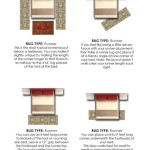Queen vs. King: A Comprehensive Guide to Bed Sizes
Choosing the right bed size can significantly impact your sleep quality, comfort, and overall bedroom aesthetic. Among the most popular bed sizes are queen and king, each offering distinct advantages and drawbacks. Understanding their dimensions and suitable scenarios can help you make an informed decision that aligns with your personal needs and preferences.
Queen Bed Dimensions: A Balance of Space and Comfort
Queen beds are a popular choice for couples and individuals seeking a spacious and comfortable sleeping experience. They offer ample room for two adults to sleep comfortably without feeling cramped. Here are the standard dimensions of a queen bed:
- Width: 60 inches (152.4 cm)
- Length: 80 inches (203.2 cm)
Queen beds are suitable for:
- Couples who prefer ample sleeping space without excessive width.
- Individuals who enjoy ample room to spread out and sleep comfortably.
- Smaller bedrooms where a king bed would be too large.
King Bed Dimensions: Indulgent Luxury for a Comfortable Sleep
King beds are the epitome of luxurious sleeping arrangements, offering unparalleled comfort and space. They are ideal for individuals seeking a truly indulgent sleep experience or couples who prefer ample room to move around freely. The standard dimensions of a king bed are:
- Width: 80 inches (203.2 cm)
- Length: 80 inches (203.2 cm)
King beds are suitable for:
- Couples who enjoy a lot of space and freedom of movement while sleeping.
- Families with children who frequently share the bed with parents.
- Individuals who sleep with pets or prefer a spacious sleep environment.
- Large bedrooms where the bed can be a focal point.
Key Considerations When Choosing Between Queen and King
The decision between a queen and a king bed ultimately depends on several factors, including your bedroom size, personal preferences, and budget. Here are key considerations to guide your selection:
1. Bedroom Size
The most important factor is the size of your bedroom. Ensure your chosen bed fits comfortably without making the room feel cramped. A queen bed typically requires at least 10 feet of width and 12 feet of length to allow for adequate movement around the bed. A king bed, on the other hand, demands more space, ideally a minimum of 12 feet of width and 14 feet of length.
2. Sleeping Habits and Preferences
Your sleeping habits and preferences play a crucial role in determining the ideal bed size. If you toss and turn frequently or share the bed with a partner who does the same, a king bed provides more room to move around without disturbing each other. However, if you sleep calmly and prefer snuggling close together, a queen bed could be sufficient.
3. Budget
King beds are generally more expensive than queen beds due to their larger size and higher-quality materials. Consider your budget constraints when choosing a size. Remember, a well-made queen bed can still provide a comfortable and luxurious sleeping experience.
4. Visual Aesthetics
The size of the bed can significantly impact the overall visual appeal of your room. In smaller bedrooms, a queen bed can create a more balanced and proportionate look, while a king bed can make the room feel overwhelming. Conversely, a king bed can create a grand and impressive statement in a larger bedroom.

King Bed Vs Queen B2c Furniture
.jpg?strip=all)
King Vs Queen Size Beds Differences Comparison And Benefits

Bed Guide 5 Tips On Choosing The Right Size Mattress Archdaily

King Vs Queen Bed Detailed Mattress Comparison Turmerry

King Vs Queen Bed What S The Difference Amerisleep

King Vs Queen Bed Size Mattress What Is The Difference Nectar Sleep

King Vs Queen Size Mattress Dreamcloud

Mattress Size Guide

The Difference Between A Queen And King Bed Bedinabox

Mattress Sizes And Dimensions Guide Clarity







